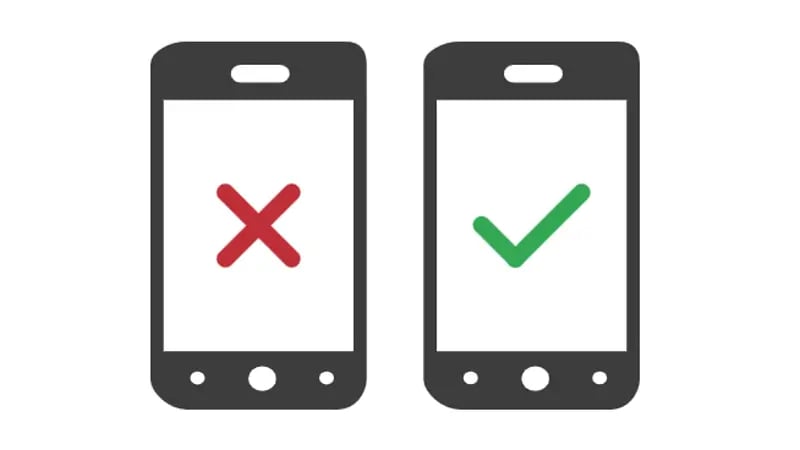Unlock SEO success: Learn how we use HubSpot Content Hub for SEO, boost rankings, increase organic traffic, and optimize our content for success.
Maximizing Your Results with A/B Testing for SEO
Digital marketing thrives on experimentation, and marketers constantly seek ways to refine their strategies. But, knowing which elements truly impact performance can be challenging.
A/B testing for SEO provides a powerful solution. It enables marketers to systematically test different versions of their content, optimizing language, layout, and messaging to maximize search engine visibility and drive organic traffic.

A/B testing is an essential SEO tool because it helps to understand the audience's preferences. By testing different variations of web pages or other digital products, businesses can gain insights into what type of content resonates with their audience, which can inform decisions around copywriting, SEO strategy, and social media strategy.
A/B testing also helps reduce risks associated with launching new campaigns. A/B testing allows businesses to make data-driven decisions and improve their chances of success by comparing two or more versions of the same content and choosing which works best. The team can choose the better-performing test features in future content rather than following some SEO myths.
A/B testing also allows scientific experimentation and measurable results. To make SEO A/B testing successful, you must begin with a valid question that can be tested and measured with a defined goal and a straightforward method.
A/B testing is most commonly used for web content on pages or page elements, e.g., forms, landing pages, and calls-to-action, because the impact of change is easy to measure and modify to achieve a desired search engine result placement. A/B testing is a marketing experiment that allows SEO professionals to test changes to the content to improve its search engine rankings.
What Is A/B Testing?
A/B testing, or split testing or bucket testing, compares the performance of two versions of the same content to determine which appeals more to visitors or viewers. It resembles a control version (A) against a variant version (B) to measure which one is most successful based on critical metrics.
In A/B testing, version A refers to the control or original testing variable, while version B refers to the variation or new version of the actual testing variable. The version that positively moves your business metric(s) is the winner. Implementing the changes of this winning variation on your tested page(s) will help to optimize the user experience and improve performance.
A/B testing is a method of testing that compares two different versions of the same asset, usually by showing them to users at random. The user engagement results are then measured and compared through statistical analysis. This allows businesses to test changes to their website, app, or marketing campaigns and determine which version performs better in conversion rate, click-through rate, or other key performance indicators (KPIs).
How can A/B testing improve SEO?
A/B testing can improve SEO results by introducing scientific experimentation and providing measurable results that can be used to hone the content strategy for a website. To make A/B testing for SEO successful, begin with a valid question that can be tested and measured. "How to improve the organic click-through rate by 10% within 90 days by testing different page titles." This question should be a SMART question with a deadline and a clear plan for how the results will be used.
One way to improve SEO results with A/B testing is by testing changes to the website's design and user experience. For example, test different button colors and text to see which results in higher conversion rates. This can be done using A/B testing tools like Google A/B testing or other paid and complimentary services.
Another way to improve SEO results with A/B testing is by testing different website content versions or design elements. This can include other testing headlines, images, and calls to action to see which results in higher click-through rates and user engagement.
It is also essential to give A/B testing enough time to provide you with relevant traffic and make sure you keep your testing for a specific period to avoid chaos. A/B testing should have a clear hypothesis and goal, such as improving the click-through or conversion rate.
You might also like:
Conducting A/B Testing for SEO
Conducting A/B testing for SEO involves several steps, including research, hypothesis development, testing, and analysis. Here are some tips and tricks to consider:
-
Conduct thorough research of the website or page to understand the current traffic, the number of visitors, the time they spend on the site, the conversion rate and its dynamics, etc.
-
Elaborate a hypothesis that, as you think, will lead to an improvement in SEO results.
-
Conduct the A/B test by creating two versions of the website or page, the control version (A) and the variation (B). These versions should be different in a specific way that aligns with your hypothesis.
-
Test the website or page versions by showing them to users randomly and track user engagement results such as click-through, conversion, bounce, etc.
-
Analyze the test results to determine which version performed better and use the data to make decisions about changes to the website or page.
-
Repeat the process, introducing new variations and testing them against the winning version. For example, if variant A proves to be better, introduce variant C in an AC test, and so on.
While most marketers only use A/B testing in a live environment, applying it to a testing environment is equally advantageous as it helps you identify and fix potential issues before going live.
A/B testing tools
Here are a few tools that help you with this process:
-
Google Optimize: This is a free A/B testing tool offered by Google that can be integrated with Google Analytics. It allows you to test changes to your website's content and measure the impact on user engagement and conversion rates.
-
HubSpot: While not a separate offering, HubSpot has built A/B testing into various hubs, e.g., for web pages, landing pages, or CTAs in the Marketing Hub and HubSpot Content Hub.
-
Optimizely: This is a popular A/B testing tool that also offers multivariate testing and personalization features. It can test your website's content changes, including headlines, images, and copy.
-
Unbounce: This is a landing page optimization platform that allows you to test different variations of your landing pages, including changes to headlines, images, and copy.
-
AB Tasty: This conversion rate optimization tool offers A/B testing, multivariate testing, and personalization features.
While tempting to test everything, it is crucial to make only one change at a time and observe the results; otherwise, it will be difficult to understand what caused the changes in rankings or conversions.
Ignoring A/B testing is a false confidence in knowing the answer and is foregoing the opportunity to learn and improve.
Ignoring A/B testing is like playing Russian roulette with your marketing strategy. You might feel confident that you know the answer, but you're overlooking the chance to learn and improve. Think of it as a "choose your own adventure" book for your business, except instead of choosing between fighting a dragon or befriending a unicorn, you get to decide if button A or button B will lead to more conversions. And who doesn't love a good choose-your-own-adventure book? But the difference is that, in this case, the consequences of a bad choice can be detrimental to your business. Don't be afraid to test, learn, and improve!
This content is also available in:
- German: Maximieren Sie Ihre Ergebnisse mit A/B-Tests für SEO
- Spanish: Maximizar sus resultados con las pruebas A/B para SEO
- French: Maximiser vos résultats avec les tests A/B pour le référencement
- Italian: Massimizzare i risultati con i test A/B per la SEO
- Romanian: Maximizarea rezultatelor cu testarea A/B pentru SEO
- Chinese: 利用搜索引擎优化 A/B 测试最大限度地提高效果








Leave a Comment